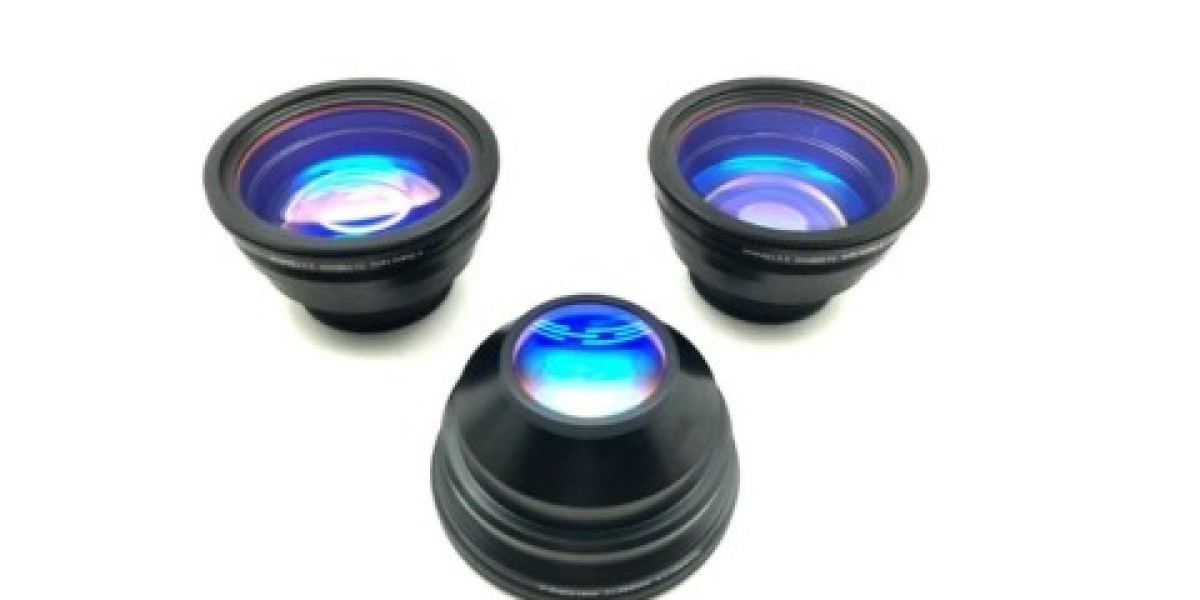At its core, a fiber laser lens directs and focuses the laser beam produced by a fiber laser source onto the work surface. It converts high-energy light into a tightly focused point, enabling precise cutting or engraving. The lens ensures that the beam maintains uniform energy density and consistent focus, which is vital for achieving clean, sharp, and accurate results on different materials.
Laser systems depend heavily on the optical quality of the lens. Even a minor imperfection can alter the beam path or create uneven heat distribution, which directly affects the final output. Therefore, the lens acts as the gateway between the raw power of the laser and the material being processed.
Material and Design Considerations
A fiber laser lens is typically made from specialized optical materials such as fused silica or zinc selenide. These materials are chosen for their ability to withstand high temperatures and resist laser-induced damage. The lens surfaces are coated with anti-reflective films designed for specific wavelengths, usually 1064 nm for fiber lasers. These coatings reduce energy loss and protect against reflection that could harm the laser source.
Precision in manufacturing is essential. Each lens is polished and inspected to eliminate any microscopic defects. The curvature, thickness, and surface accuracy of the lens are measured in microns to ensure optimal performance. Any deviation in these parameters can cause scattering or distortion in the beam, reducing accuracy.
Types of Fiber Laser Lenses
Different fiber laser lens designs serve different industrial purposes. Focusing lenses are used in cutting and welding machines, while collimating lenses ensure the beam remains parallel before it enters the focusing optics. Some systems use a combination of both for enhanced accuracy.
In laser cutting, a short focal length lens produces a smaller spot size, ideal for thin materials or intricate designs. Conversely, a long focal length lens provides greater depth of focus, suitable for thicker metals or high-power applications. This versatility makes fiber laser lenses adaptable across industries such as automotive, aerospace, and electronics manufacturing.
Lens Maintenance and Handling
A fiber laser lens demands regular inspection and maintenance to maintain stable performance. Dust, oil, or metal spatter on the lens surface can block or reflect the beam, leading to power loss or even lens damage. Technicians often use non-contact cleaning tools and dedicated lens wipes to preserve the coating and clarity.
The environment around the laser machine also matters. Keeping it clean, with minimal airborne particles, extends the lens’s operational life. Proper cooling systems and correct alignment further ensure that the lens performs efficiently without overheating or misfocusing.
Replacing a lens at the right time is just as important as maintaining it. Signs such as visible burn marks, reduced cutting speed, or inconsistent engraving patterns indicate that the fiber laser lens needs replacement. Using an old or damaged lens can reduce the lifespan of the entire laser head and compromise quality.
Applications Across Industries
The fiber laser lens is indispensable in a wide range of industrial applications. In metal fabrication, it ensures high-precision cutting of stainless steel, aluminum, brass, and titanium. In welding, it helps create strong, consistent seams with minimal heat distortion.
Electronics manufacturers rely on fiber laser lenses for micro-engraving and marking of components, where precision is measured in microns. In automotive production, these lenses assist in producing durable and aesthetically precise welds for body parts and engine components.
Jewelry and medical equipment industries also benefit from the precision offered by fiber laser lenses, where clean cuts and delicate engraving are essential. In every case, the lens determines how effectively laser power is transferred to the material surface.
Importance of Compatibility
Not all lenses fit every laser system. Each fiber laser lens is designed with specific parameters, including focal length, diameter, and wavelength compatibility. Using the wrong lens type can result in misalignment or uneven focusing.
Manufacturers often provide lens specifications that match their laser heads, ensuring consistent performance. When upgrading or replacing a lens, verifying these details is crucial. A compatible lens maintains stable beam quality, optimal focus, and uniform energy distribution.
Quality Control in Lens Manufacturing
Modern manufacturing of fiber laser lenses involves strict quality control measures. Optical testing equipment, interferometers, and power meters are used to verify the lens’s transmission efficiency and surface accuracy.
Coating uniformity is tested to ensure that anti-reflective layers perform consistently across the lens surface. Every finished product undergoes inspection to eliminate flaws that could cause beam distortion. This precision ensures that end users receive lenses capable of withstanding high-power operations without degradation.
Performance Optimization
Even the best lens can perform poorly if not properly calibrated. Correct alignment of the fiber laser lens within the optical path is key to maintaining a consistent beam focus. Many operators use automated calibration systems or beam profilers to adjust lens positioning.
Environmental factors such as temperature, humidity, and vibration can also influence lens performance. Therefore, controlled conditions in production facilities help maintain the lens’s integrity and performance over time.
Technological Advancements in Fiber Laser Lenses
Innovation in optical engineering continues to improve the fiber laser lens. Today’s lenses are designed for higher laser powers and tighter tolerances. Advanced coating technologies now allow better resistance against contamination, reflection, and thermal expansion.
Some modern fiber laser systems integrate adaptive lenses that automatically adjust focal distance based on the thickness or type of material. This smart focusing capability enhances productivity and precision without manual intervention.
Additionally, the use of hybrid optics—combining lenses and mirrors—improves energy transfer efficiency while reducing system weight. As laser applications expand into new industries, lens technology continues to evolve for improved reliability and durability.
Selecting the Right Lens
Choosing the right fiber laser lens depends on multiple factors such as laser power, material type, and processing speed. A low-power laser used for engraving requires a different lens design than a high-power system for industrial cutting.
Operators must also consider beam diameter, lens coating, and working distance. Consulting the equipment manufacturer or optical supplier ensures the correct pairing between laser source and lens specifications. A well-matched lens setup ensures consistent beam focus and reduced wear.
Cost Efficiency and Longevity
While high-quality fiber laser lenses may cost more upfront, they offer better performance stability and longer lifespan. Frequent replacement of low-grade lenses can result in downtime and maintenance costs that outweigh initial savings. Investing in durable, precision-engineered optics increases overall system efficiency and operational profitability.
The lifespan of a fiber laser lens depends on operating conditions, cleaning frequency, and material type. Systems running in dusty or metallic environments require more frequent lens inspections. Proper lens care extends operational life and maintains consistent beam quality over thousands of working hours.
Final Thoughts
The fiber laser lens stands as one of the most crucial components in modern laser systems. It directly influences accuracy, speed, and consistency in every industrial process. With advancements in optical design and manufacturing, these lenses now deliver higher durability and precision than ever before.
Selecting the right lens, maintaining it properly, and ensuring system compatibility all contribute to long-term success in laser processing. Whether in metal fabrication, electronics, or precision engraving, the performance of the fiber laser lens defines the overall efficiency and reliability of every operation.








